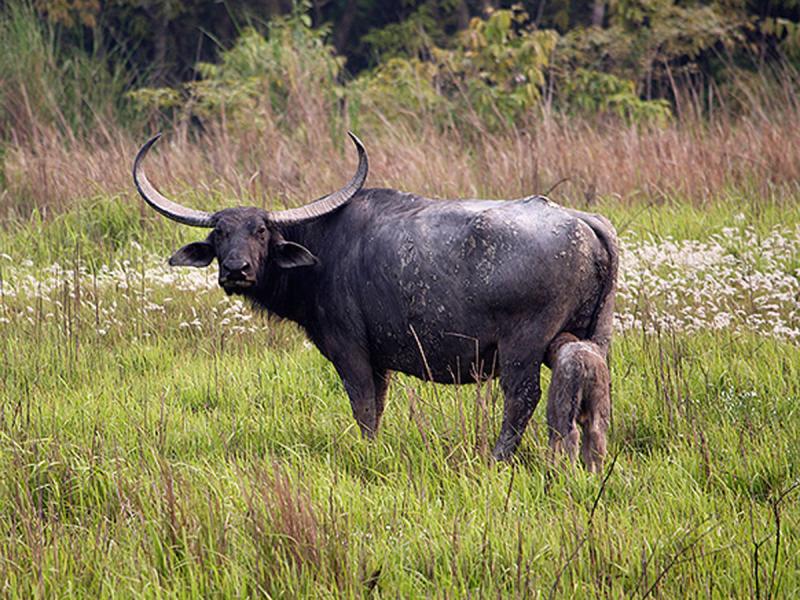12 Biggest Herbivore Mammals of The Indian Subcontinent
Herbivore animals that are adapted to eat plants and a class of vertebrate and form an important link in the food chain. Giant herbivore wild mammals of Indian Subcontinent include Dugong,Spotted deer,Rocky Mountain goat,hog deer, Sangai, Gayal, Blackbuck,Wild Pigs,Grazing Camels,wild horse and Wild Mithun, Top 5 giant animals of Indian grassland.
Elephant

The Indian Elephant is one of three recognized subspecies of the Asian elephant and has been listed as endangered. Indian elephants are native to mainland India and are classified as megaherbivores.
Rhinoceros

The Indian rhinoceros also called as greater one-horned rhinoceros is a vulnerable species and one of the largest mammal primarily found in Assam. Riverine grasslands,protected areas of Terai and foothills of the Himalayas are the only home to the fifth largest land animal in India.
Gaur

The Gaur also called Indian bison is the largest extant bovine native to the Indian subcontinent and listed as vulnerable. Indian bison is the tallest species of wild cattle with strong and massively built.
Nilgai

The Nilgai also known as the blue bull is the largest Indian antelope and one of the most commonly seen wild animals of central and northern India. Nilgai antelope are found throughout most of India,living in grasslands and woodlands and can be seen with blackbuck in the open plains of national parks.
Sambar

The Sambar is one of the large deer native to the Indian subcontinent, found in habitats ranging from tropical seasonal forests. Sambar prefer the dense cover of deciduous shrubs and grasses in protected areas such as national parks and reserves in India.
Wild Ass

Indian Wild Ass or Baluchi wild ass graze between dawn and dusk of the Indian Wild Ass Sanctuary, Little Rann of Kutch and its surrounding areas of the Great Rann of Kutch.
Yak

The Yak is a long-haired bovid found throughout the Himalaya region of India, Wild yaks are now a vulnerable species found primarily into Ladakh and Himachal Pradesh.
Barasingha

The Barasingha also called swamp deer is a twelve-tined Indian deer species distributed in the Indian subcontinent and largely feed on grasses and aquatic plants. Swamp deer are threatened by poaching, habitat loss and for meat.
Wild Camel

Camel of Rajasthan are one of the largest inhabitant mammals of the thar desert and known as Ship of the Desert. The Wild Camel or Bactrian camel is the largest mammal in its native range and the largest living camel found in Nubra Valley in India. Image-bbc
Wild Water Buffalo

Indian Wild Water Buffalos are a large bovine native to the Indian Subcontinent and listed as endangered,occur only in Assam. Kaziranga, Manas and Dibru-Saikhowa National Parks of Assam are famous for its population of the Wild water buffalos.
Wild Goat

The Mountain Goats are also known as the Rocky Mountain goat that also includes the wild goat and ibex. Goral or wild mountain goat of the Himalaya,Himalayan tahr and Nilgiri tahr are three species of endangered mountain ungulate.
Feral Horse

A Feral Horse is a free-roaming horse but not a wild animal,often are popularly called wild horses of India. Feral horses live in groups and Dibru Saikhowa National Park of Assam is the only place in India where Wild horses roam in herds and marshy grasslands.








